Description
The story of EA ‘Ted’ McDonald. Limited edition of 300. Only a few copies remain
Classy hardback biography, pictorial boards, proudly published by Ken Piesse in his Nostalgia series
Additional information
| Published | |
|---|---|
| ISBN | 9780992522810 |
1 review for Richardson, Nick – EA ‘Ted’ McDonald, The Silk Express, biography
Add a review Cancel reply
You must be logged in to post a review.
Related products
-
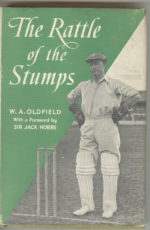
Oldfield, Bert – The Rattle of the Stumps
$33.00 Add to cart -
Sale!
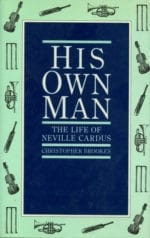
Brookes, Christopher – His Own Man, the life of Neville Cardus
$11.00Original price was: $11.00.$5.50Current price is: $5.50. Add to cart -
Sale!
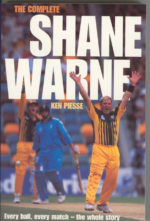
Piesse, Ken – The Complete Shane Warne
$16.50Original price was: $16.50.$5.50Current price is: $5.50. Add to cart -
Sale!
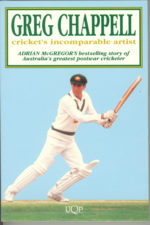
McGregor, Adrian – Greg Chappell (softback)
$11.00Original price was: $11.00.$1.10Current price is: $1.10. Add to cart

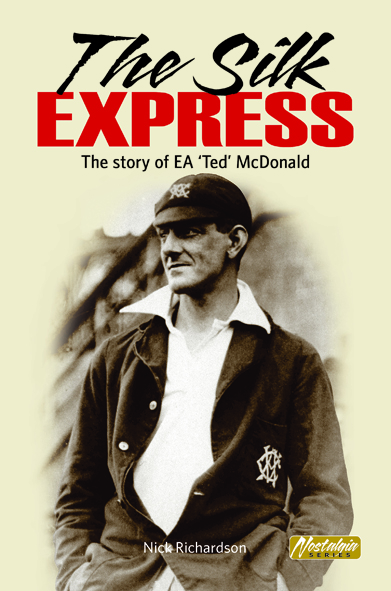

Ken Piesse –
Review by David Frith:
Here’s one that Agatha Christie missed. Jack Gregory and Ted McDonald formed a memorable fast-bowling duet for Australia in the 1920s, yet relatively little is known of them as people. Gregory went into his shell after being chastised by the Australian Board for making an innocent remark to a reporter, leaving his story untold. The Tasmania-born McDonald left the scene to pursue a living as a cricketer over in England. As ever, Australians thought little of him for deserting his native land, and his name has undoubtedly been subjected to some air-brushing.
That banishment from memory has now been rectified in a book which sets out to plough through the misconceptions and half-truths. One of the first revelations is that McDonald stole from his employers in Launceston and hurriedly sought a new life on the mainland. His first-class debut for Victoria was as long ago as 1911-12, and he became not only a much-feared fast bowler but one whose silky run-up and delivery became a byword for athletic beauty. His strong physique combined with the smoothness of his action made him just as fearsome a bowler as the bounding, thundering Gregory at the other end, with McDonald rather more sinister by virtue of those sullen dark-ringed eyes.
So he played only 11 Test matches for Australia (never on a losing side) before seeking a living in Lancashire, first in the league with Nelson, where both the attendance figures and his bowling analyses often beggared belief, then with the county club from 1924 to ’31 (the red rose county won three Championships), before returning to league cricket. For a time he was the finest fast bowler in the world, with Cardus’s lavish essays sustaining the image. In 219 matches for the county McDonald recorded 109 five-fors. And he made it clear from the start that he was not going to speak to reporters. Batsmen certainly earned their runs in those summers when McDonald and Larwood were on the county circuit. Curiously the Australian was to express disapproval of Bodyline even though he himself often gave batsmen a hot time, especially if they had upset him in some way. Then again, when Frank Woolley slammed a six into the Old Trafford pavilion tower and the ball bounced all the way back to the bowler on his walk-back, McDonald merely murmured “Good shot, Frank.”
When he began playing county cricket there were protests, even before it became known that McDonald was the highest-paid professional on the circuit. Foreigners simply weren’t wanted. Those critics would be out of their skins in today’s county environment.
Of necessity, county matches are dealt with selectively, and there is a discourse on the amateur-professional divide in the English game. His death at 46 in a freakish motor-car accident near Bolton is among cricket’s saddest conclusions. He had been due to play for the first time alongside his 15-year-old son on the following weekend.
This is a rather special book, with a good statistical summary, but diminished just a little by poor proofing, American spelling, and a somewhat pretentious bibliography. The Ted McDonald story has been a long time coming, but no genuine cricket-lover could fail to be gripped by it.